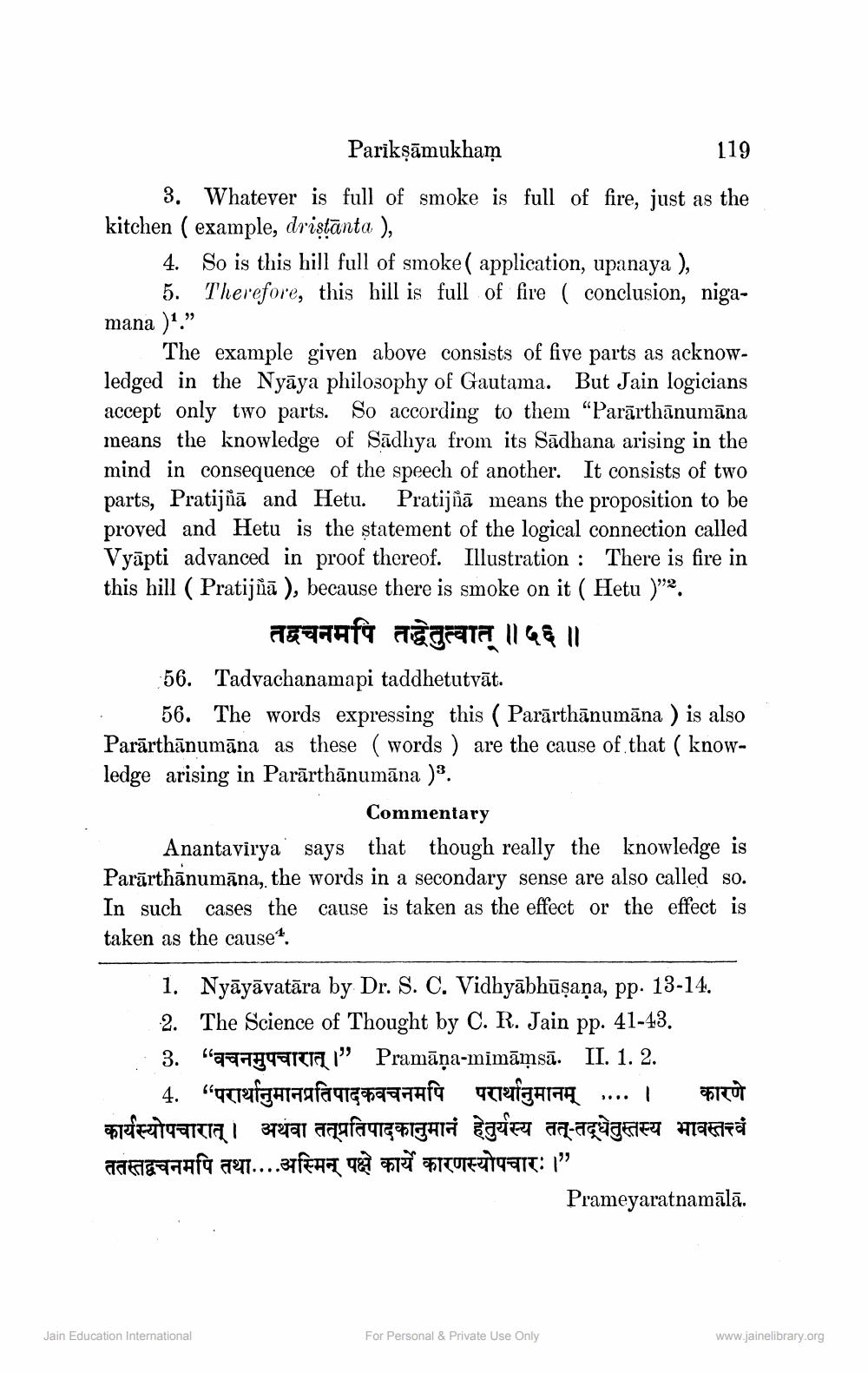________________
Pariksāmukham
119
3. Whatever is full of smoke is full of fire, just as the kitchen ( example, driştānta ),
4. So is this hill full of smoke( application, upanaya ),
5. Therefore, this hill is full of fire ( conclusion, nigamana )'."
The example given above consists of five parts as acknowledged in the Nyāya philosophy of Gautama. But Jain logicians accept only two parts. So according to them “Parārthānumāna means the knowledge of Sādhya from its Sādhana arising in the mind in consequence of the speech of another. It consists of two parts, Pratijñā and Hetu. Pratijñā means the proposition to be proved and Hetu is the statement of the logical connection called Vyāpti advanced in proof thereof. Illustration : There is fire in this hill ( Pratijñā), because there is smoke on it ( Hetu )”2.
तद्वचनमपि तद्धेतुत्वात् ॥५६॥ :56. Tadvachanamapi taddhetutvāt.
56. The words expressing this ( Parārthānumāna ) is also Parārthānumāna as these ( words ) are the cause of that ( knowledge arising in Parārthānumāna ).
Commentary Anantavirya says that though really the knowledge is Parārthānumāna, the words in a secondary sense are also called so. In such cases the cause is taken as the effect or the effect is taken as the cause.
1. Nyāyāvatāra by Dr. S. C. Vidhyābhūşaņa, pp. 13-14. 2. The Science of Thought by C. R. Jain pp. 41-43. 3. W ayqantai" Pramāņa-mimāmsā. II. 1. 2.
4. "orefahtaafaqg4q7hfa qafqa1a4 ... 1 1 कार्यस्योपचारात् । अथवा तत्प्रतिपादकानुमानं हेतुर्यस्य तत्-तदूधेतुस्तस्य भावस्तत्त्वं ततस्तद्वचनमपि तथा....अस्मिन् पक्षे कार्ये कारणस्योपचारः।"
Prameyaratnamālā.
Jain Education International
For Personal & Private Use Only
www.jainelibrary.org




